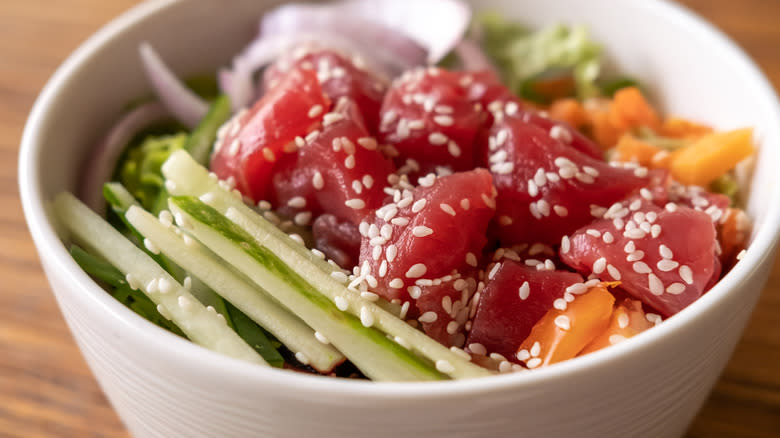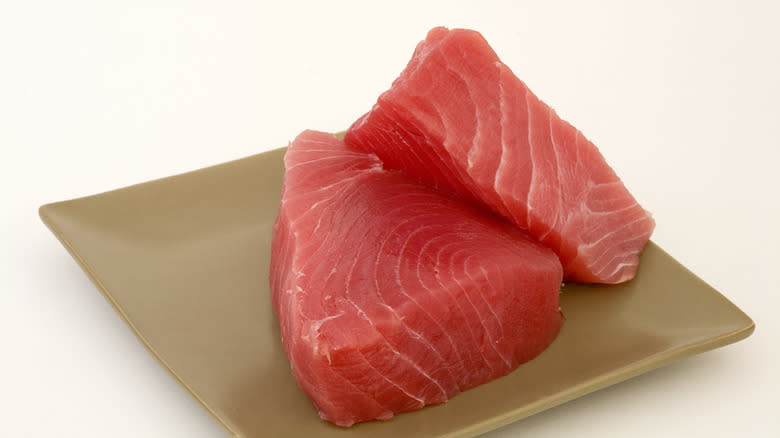The Best Type Of Tuna To Use For Poke Bowls

Are you looking to make tuna poke bowls at home but finding it challenging to choose the best type of tuna? After all, the key to a great tuna poke bowl lies in both the quality and type of tuna you select. We recommend starting with ahi tuna — either a fresh bigeye or yellowfin tuna fillet — for your tuna poke bowls. Ahi tuna has rich flavor, natural umami, and firm flesh, making it ideally suited for slicing into bite-sized chunks for poke bowls.
Next, since you'll be eating raw tuna, you'd want to select sushi-grade or sashimi-grade fish. However, it's important to note that in America, the U.S. Food and Drug Administration does not regulate the terms "sushi-grade" or "sashimi-grade." These designations just indicate that the fish has been cleaned of blood and guts and iced or flash-frozen. While sushi- or sashimi-grade fish is the gold standard of fish to consume raw, it's still possible to get sick from parasites, tapeworms, or bacteria according to the USDA, though the chances are slimmer. We also want to emphasize that choosing the freshest cuts of tuna for your poke bowls does not necessarily mean opting for fish that has just been caught from the open seas. Instead, it's important to select fish that looks and smells fresh and has also undergone the specific handling and processing required for sushi- or sashimi-grade quality.
Read more: 15 Different Ways To Cook Fish
Selecting And Preparing The Best Tuna For Poke Bowls

How can you tell tuna is fresh just by looking at it? Well, look for bright, vibrant, reddish hues. The flesh shouldn't be watery, mushy, or slimy. If the tuna looks dull or brown or smells off, it's best to avoid it. Don't hesitate to ask the fishmonger for advice or help selecting the best tuna cut for your homemade tuna poke bowls.
These days, many supermarkets, like Whole Foods, offer packaged sushi- or sashimi-grade salmon and tuna for sale. Check the label on the packaging for best-by dates. Many supermarkets and fish markets also provide information about the source and handling of their seafood, so don't hesitate to ask whenever you have a question.
At home, proper storage and preparation of the tuna are essential. Sushi-grade tuna should be kept cold until you're ready to prepare your poke bowl. With clean hands, use a sharp knife to cut the tuna into even, bite-sized cubes. Lastly, pairing the tuna with complementary ingredients like soy sauce, sesame oil, and fresh vegetables like edamame and seaweed will bring out the best in your well-selected tuna.
Read the original article on Tasting Table.

